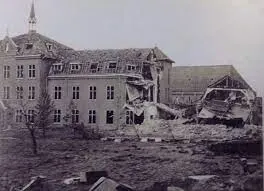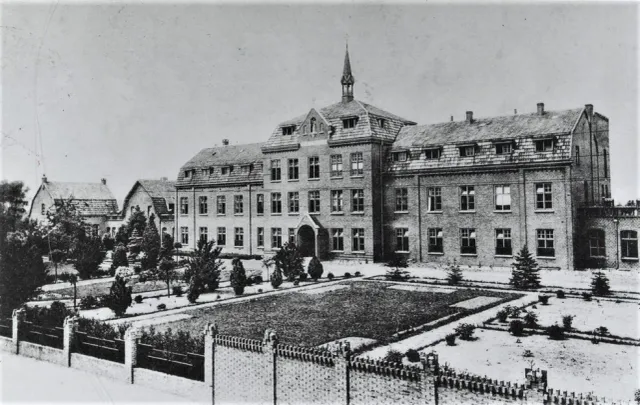V1 sows death and destruction
Large parts of North Brabant were on the route of the V-1 flying bombs. Even a Canadian headquarters in Kaatsheuvel did not escape disaster.
Operation Elephant lasted from 26 to 31 January 1945, and was intended to destroy the German bridgehead at Kapelsche Veer. During this operation, the headquarters of the 9th Field Squadron RCE, a company of the Canadian Engineers, was located in the Mission House on Antoniusstraat in Kaatsheuvel. The Canadian Engineers had many tasks; the most important was building bridges, vital in the water-rich Netherlands, and they were also responsible for road maintenance. Their work at the front was often life-threatening, but the staff based at the headquarters were located at a safe distance. However, things could go wrong there too.
On Friday 26 January 1945 at 3.45pm, a V-1 flying bomb crashed into the Mission House and the Van den Oord bakery next door. At the time, the Mission House was home to many evacuees from Zeeland and West-Brabant. The crash this caused was enormous. The Red Cross column from Waalwijk pulled fifteen bodies from under the rubble, and the final death toll was 26.
A Canadi…
Operation Elephant lasted from 26 to 31 January 1945, and was intended to destroy the German bridgehead at Kapelsche Veer. During this operation, the headquarters of the 9th Field Squadron RCE, a company of the Canadian Engineers, was located in the Mission House on Antoniusstraat in Kaatsheuvel. The Canadian Engineers had many tasks; the most important was building bridges, vital in the water-rich Netherlands, and they were also responsible for road maintenance. Their work at the front was often life-threatening, but the staff based at the headquarters were located at a safe distance. However, things could go wrong there too.
On Friday 26 January 1945 at 3.45pm, a V-1 flying bomb crashed into the Mission House and the Van den Oord bakery next door. At the time, the Mission House was home to many evacuees from Zeeland and West-Brabant. The crash this caused was enormous. The Red Cross column from Waalwijk pulled fifteen bodies from under the rubble, and the final death toll was 26.
A Canadian soldier was also killed, sapper William Richards, as he was in the bakery where he was billeted. The wounded were taken to hospital in Tilburg, and more than eighty evacuees initially stood dejected in the streets after the explosion. They were transported in Canadian trucks to an empty factory in Waalwijk, where they stayed for a week. They were then housed at various different locations. By late May, they ended up in the Mission House in Etten-Leur, and only after the German capitulation could they return home.
Besides one dead, the Canadians counted no fewer than 20 wounded, including the company commander, Captain Clazie. His right-hand man, Lieutenant Beavan, took over command and set up a new headquarters in Café Van Boxtel across Antoniusstraat. The battle at Kapelsche Veer had just begun and would continue for almost a week. There, too, the 9th Field Squadron suffered badly.
This is how to reach V1 sows death and destruction
5171 DA Kaatsheuvel Plan your route naar V1 sows death and destruction
Starting point: from your location



